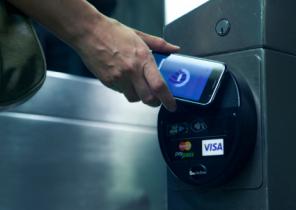
The total value spend of Near Field Cummunication (NFC) mobile payments will rise from $4 billion in 2012 to $191 billion in 2017, breaking the $100 billion mark in 2016.
Despite Apple rejecting NFC for its latest smartphone, the iPhone 5, or its mobile operating system, iOS 6, ABI Research has forecast a huge rise in such payments.
Mobile payments and more importantly the convergence between payment types – proximity, P2P and online – stored on a single NFC handset will be the initial trigger, driving market convergence across a host of other markets, including ticketing, retail, loyalty, and access control.
Market convergence is not quite ready for mass commercial roll out, but the potential value add that NFC brings has been identified.
Smart card and IC vendors, device OEMs, MNOs, partnering service providers, and payments networks are all set to benefit should convergence prove successful.
Only 2 percent of merchants globally are equipped with NFC-reader terminals, not enough to merit Apple’s attention, said Rick Oglesby, an analyst at Aite Group. “Apple would need something really global to make it work,” he said.
ABI’s predictions suggest Apple will have to address NFC sooner rather than later.
Research analyst Phil Sealy says, “Market convergence is at least two years away from reality.
Instead of NFC Apple promotes its Passbook mobile payment software, which runs on iOS 6.
Passbook relies on transmitting payment data via barcodes on the iPhone 5′s display.
“Passbook is the best way to collect all your passes in one place,” said Scott Forstall, senior vice president of iOS software. At the iPhone 5 launch he showed how an airline boarding pass, a Starbucks card, a football ticket and other forms of money-backed “passes” can be presented in barcode format to make a transaction.
ABI believes transportation and ticketing will be the first market to benefit from convergence, with 26% of all NFC handsets forecast to house a contactless ticketing application in 2017.
“Transport authorities will have the ability to offer additional added value services, including route planners, delay bulletins, time tables, as well as retail and loyalty, or advertising applications offering own brand or partnering/local business a platform to offer additional solutions to generate new revenue streams,” said Sealy.
Practice director John Devlin added, “There remains a number of barriers and limiting factors that need addressing before convergence success.
“The business models have not yet been clearly identified and proven with no real-world case studies to demonstrate the potential returns. Current MNO pricing strategies makes market entrance and investment difficult for potential partners.
“This is demonstrated by MNOs holding back from large-scale investment in NFC smartphones. Also Telefonica O2′s mobile wallet and Barclays PingIt have not included NFC functionality at launch.
“Although NFC is in their roadmaps, initial convergence is based upon the use of other technologies.”





